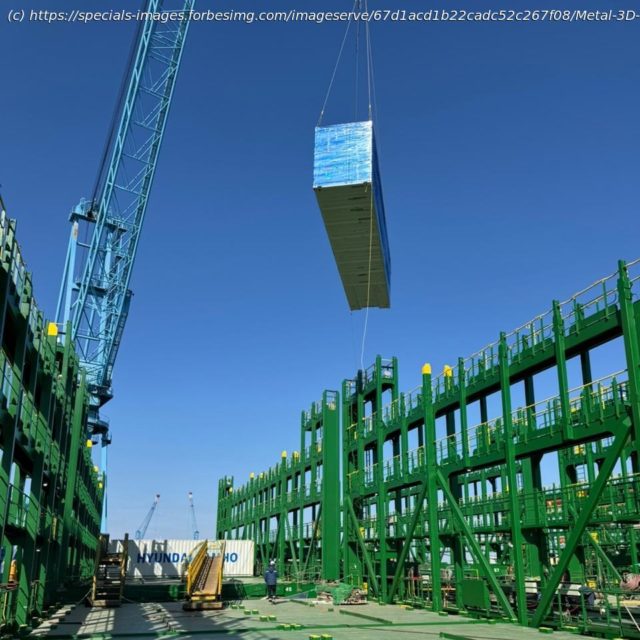HHI’s innovative containerized «3D Printing Digital Workshop» represents the leading edge of this technology, with potential implications far beyond shipbuilding.
When a critical part fails on a ship out at sea, miles from the nearest port, the crew scrambles to find a solution, knowing that delays can cost millions and repairs might take weeks. In these moments, the ability to manufacture replacement parts onboard could mean the difference between a minor setback and a major operational failure.
Additive manufacturing (AM) has long been hailed as a game-changing technology in industries like aerospace and healthcare, but maritime applications have yet to achieve the same status, probably due to the unique challenges of shipbuilding and open-sea conditions. However, recent developments by an HD Hyundai Heavy Industries (HHI) consortium—that also includes the American Bureau of Shipping (ABS), Ulsan metro City, CS CAM and KITECH—signal a significant turning point for 3D printing in the maritime sector. The consortium’s containerized «3D Printing Digital Workshop» represents the leading edge of this technology, with potential implications far beyond shipbuilding.The State of Maritime 3D Printing
Over the past decade, the maritime 3D printing sector has been maturing, albeit at a slower pace than other industries. Shipping giant Wilhelmsen, for instance, has been driving the ability to 3D print and deliver spare parts from its AM center in Singapore to seagoing vessels off the coast. In one instance, they demonstrated a low-cost quadcopter to send the components to a ship at sea.
The progress there ultimately led Wilhelmsen to partner with German engineering leader thyssenkrupp to establish a joint venture dedicated to 3D printing for maritime and beyond. Dubbed Pelagus 3D, the firm is developing an inventory of 3D printable parts for marine customers.
Meanwhile, standards bodies such as the American Bureau of Shipping (ABS) have been conducting steady research into AM for maritime, establishing standards and validating numerous 3D printed parts, critical and non-critical, large and small.
«AM has been steadily advancing over the past decade, with progress accelerating in recent years,” said Dr. Gu Hai, Vice President of Technology at ABS. “As industries worldwide prioritize digitization, decarbonization, and supply chain resilience, now is the right time for the maritime sector to embrace this technology. ABS is well positioned to support this transition, particularly as the global leader in classification services for marine and offshore assets. Our commitment to leading research and providing insights ensures we remain at the forefront of technological advancements in the marine and offshore industries.»
At the same time, all of the world’s navies have invested in 3D printing technologies. The U.S. Navy may be the most dedicated so far, having commissioned AM facilities and installing the world’s first onboard metal printer on a naval vessel, the USS Essex.
However, the latest news from HHI, the largest shipbuilder in the world, represents a tipping point for maritime AM.
Домой
United States
USA — Art On-Ship 3D Printer From HD Hyundai-ABS Consortium Turns The Tide For Maritime...






